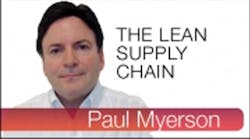The Customer Is Always Right (but maybe not so efficient)
A recent visit to several auto repair shops for an estimate reminded me as to how important good customer service is for both the customer and the business.
In one case, it was made clear to me what was involved in the estimating procedure in a nice and friendly manner and the results were very specific and reasonable. In the other case, the manager looked annoyed to have to go through the process and in the end gave me an “open ended”, very expensive quote (and even charged me for looking at the vehicle, which the other business did not and stated that from the get go).
When we think of customer service as a process, we can use some general techniques which can help you to make sure you have the correct service process for your business as well as how efficient that process is. These techniques include a “Service Process Matrix”, which is a classification matrix of service industry firms based on the characteristics of the individual firm's service processes, and the more detailed “Service Blueprinting” which is a tool that simultaneously shows the service process, the points of customer contact and the service delivered from the customer’s point of view.
When looking at our interaction with the customer, we also need to always keep in mind that in many cases (as was pointed out in a recent Forbes Magazine article), “There's Nothing Less Efficient Than Providing Great Customer Service”. The article describes how inherently inefficient customers actually are as some interaction with customer is always necessary, but often affects performance adversely.
As today’s customers want everything “now” and products and services customized to their needs, adjusting your scheduling, staffing, and resources to meet the needs of customers is a very important part of providing a great customer service.
The better customer interactions are accommodated in the process design, the more efficient and effective the process. You just need to find the right combination of cost and customer interaction.
There are a variety of techniques that can accomplish this such as:
Separation - Structuring service so customers must go where the service is offered (and moving less efficient processes to the “back room”).
Self-service - Self-service so customers examine, compare, and evaluate at their own pace.
Postponement – Customizing product or service at delivery .
Focus - Restricting the offerings to the customer.
Automation - Separating services that may lend themselves to some type of automation
Modules - Modular selection of service or modular production.
In the end, you can use Lean methodologies to be efficient but always need to keep in mind what does or doesn't add value to the customer so that you know that you are also providing a great customer experience.




